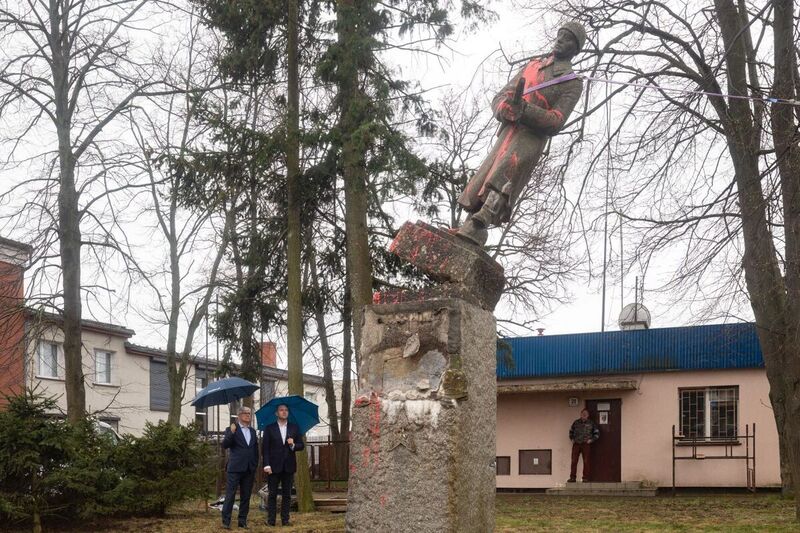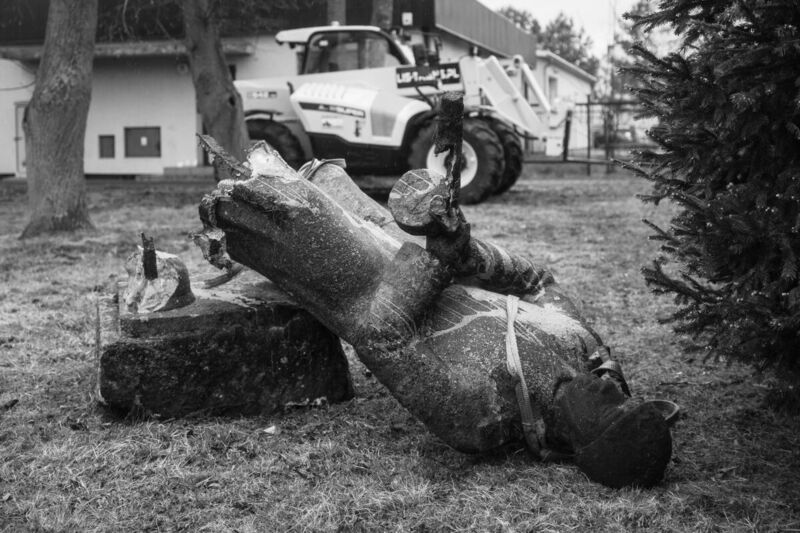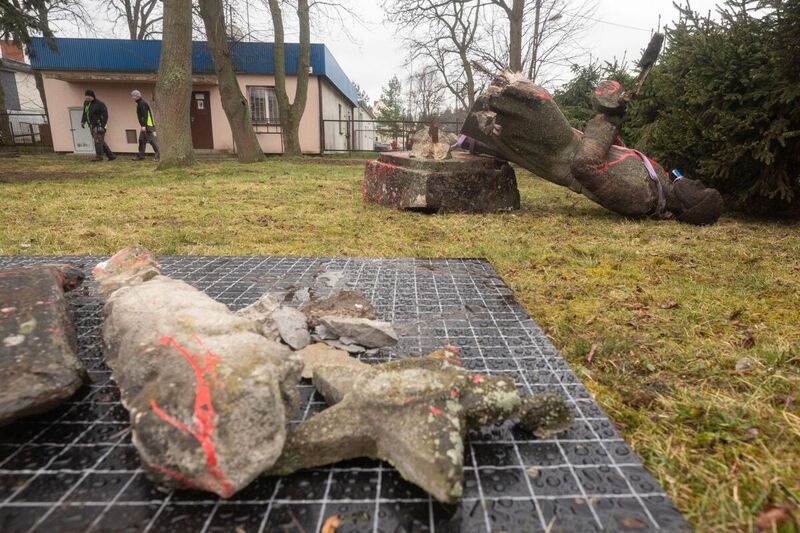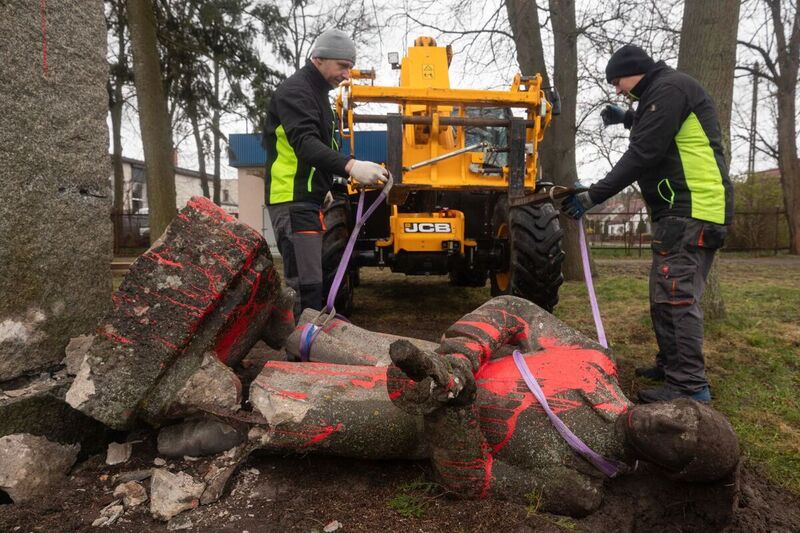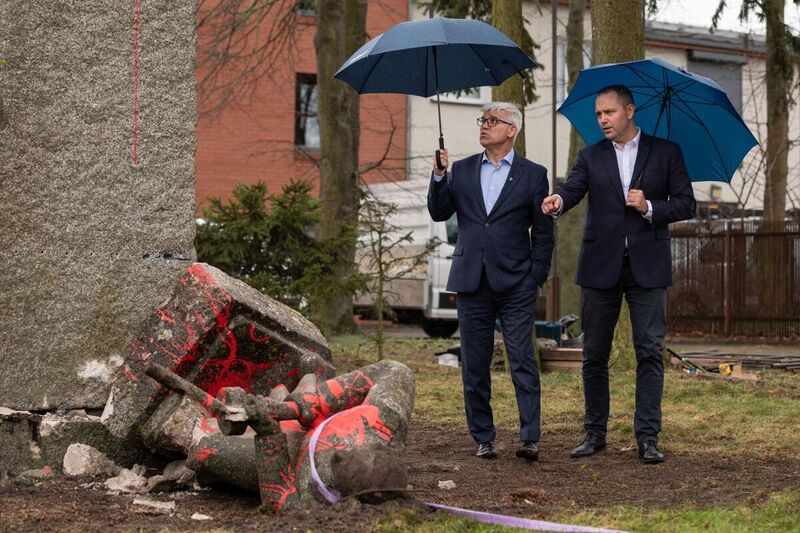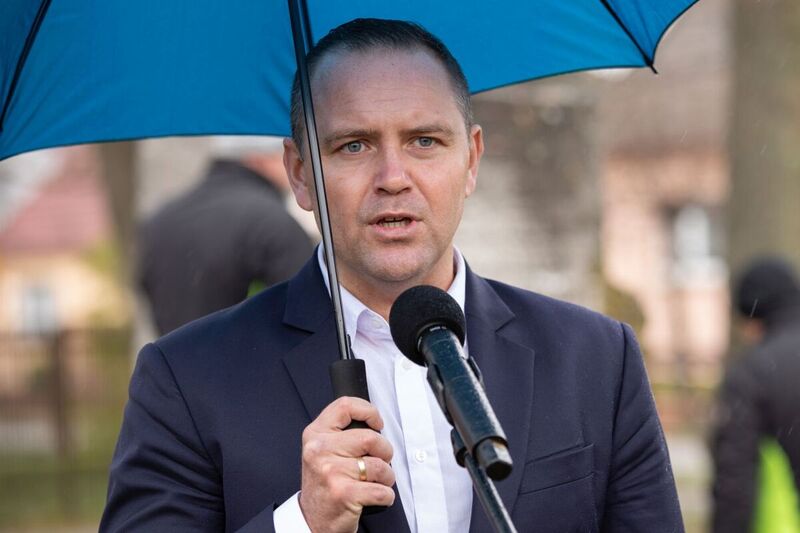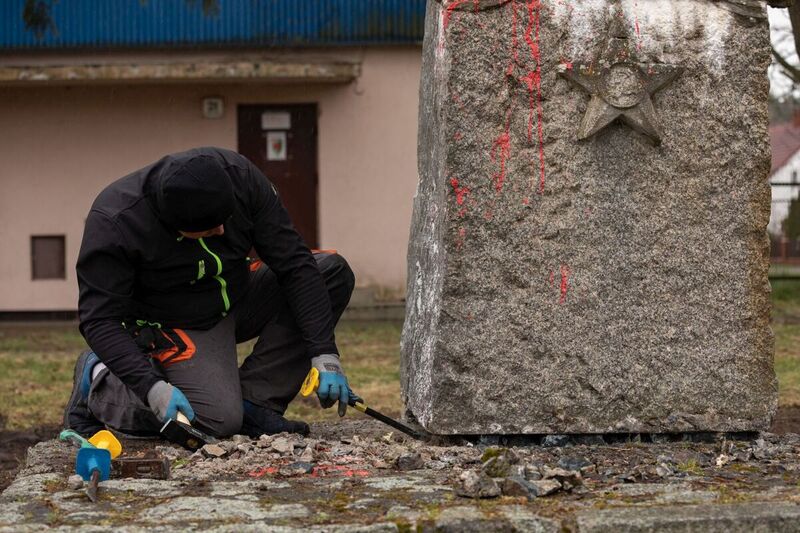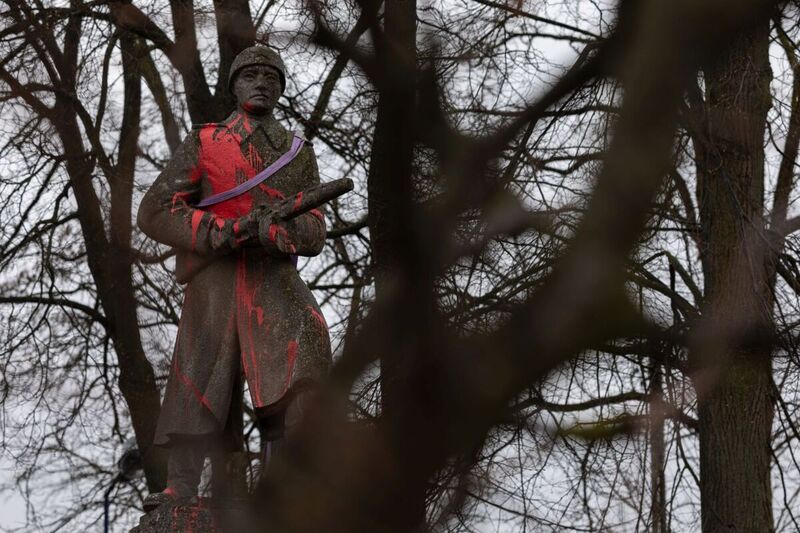Placing those who enslaved free, independent states — those who inflicted pain and suffering on women and children — on monuments, is an injustice to the victims and an assault on history,
said the President of the IPN Karol Nawrocki, Ph.D., during the briefing in Siedlec.
The President of the IPN stressed that the Institute is carrying out its statutory tasks and respects the integrity of the cemeteries, which are places of eternal rest. In the circle of Christian civilization, the destruction of cemeteries and graves is an act of barbarism. The IPN has been implementing the Act of the Polish parliament on decommunization of the public space leaving the cemeteries intact.
Those who want to see a liberator in a statue of a Soviet soldier, please recall the photographs of the Gniezno Archcathedral in flames, one of the symbols of Christian culture in Poland, just after the end of hostilities in January 1945 (…) Those who want to see a Soviet soldier with a submachine gun as a liberator should imagine the small town of Radomyśl, Poland on Christmas Eve of 1945, where Soviet soldiers raped a 56-year-old woman and a 23-year-old woman seven months pregnant,
remarked Karol Nawrocki.
On 20 April 2022, other communist monuments were also dismantled: in Międzybłocie, Greater Poland Voivodeship and in the village of Garncarsko, Lower Silesian Voivodeship.
There are still about 60 Soviet monuments in Poland. The Institute of National Remembrance will continue the campaign aimed at removing all the monuments commemorating Red Army soldiers.
The full transcript of the of the IPN’s President statement
